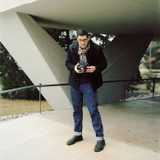Expo / Global
Snappers’ delight
To mark Monocle’s 15th anniversary we’ve asked 14 faithful photographers in seven key cities to shoot a portrait of one another and share their insights on the importance of visual storytelling, being present and the craft of photojournalism. Back in 2007 magazine sales were dwindling because of a perceived lack of enthusiasm from readers. “Really?” our founding team wondered. Might that not be because many media owners were snipping back commissions, cutting budgets and using image agencies instead of taking their own photographs? Surely a well-told tale would still be able to beguile, bewitch and enchant? That’s why from issue 1 to issue 151, we’ve believed in sending photographers to get the stories worth covering (and, where possible, shooting on film). It’s why every issue is stuffed with original reportage and fresh ideas. March also marks the release of ‘The Monocle Book of Photography’: Reportage From Places Less Explored, published with Thames & Hudson. Now, are you ready for our close-up?
Hansaviertel, Berlin
Felix Brüggemann
Shot by Robert Rieger on a Plaubel Makina 67
“You’re going to hate what I’m telling you,” monocle’s creative director Richard Spencer Powell said to Felix Brüggemann more than a decade ago. “But I think you’re best when you shoot boring things.” What Powell meant is that the self-taught photographer has the unique capacity to capture the beauty of the everyday. “I go somewhere with the camera,” says Brüggemann. “And then see what is there at that moment.” Simple, eh?
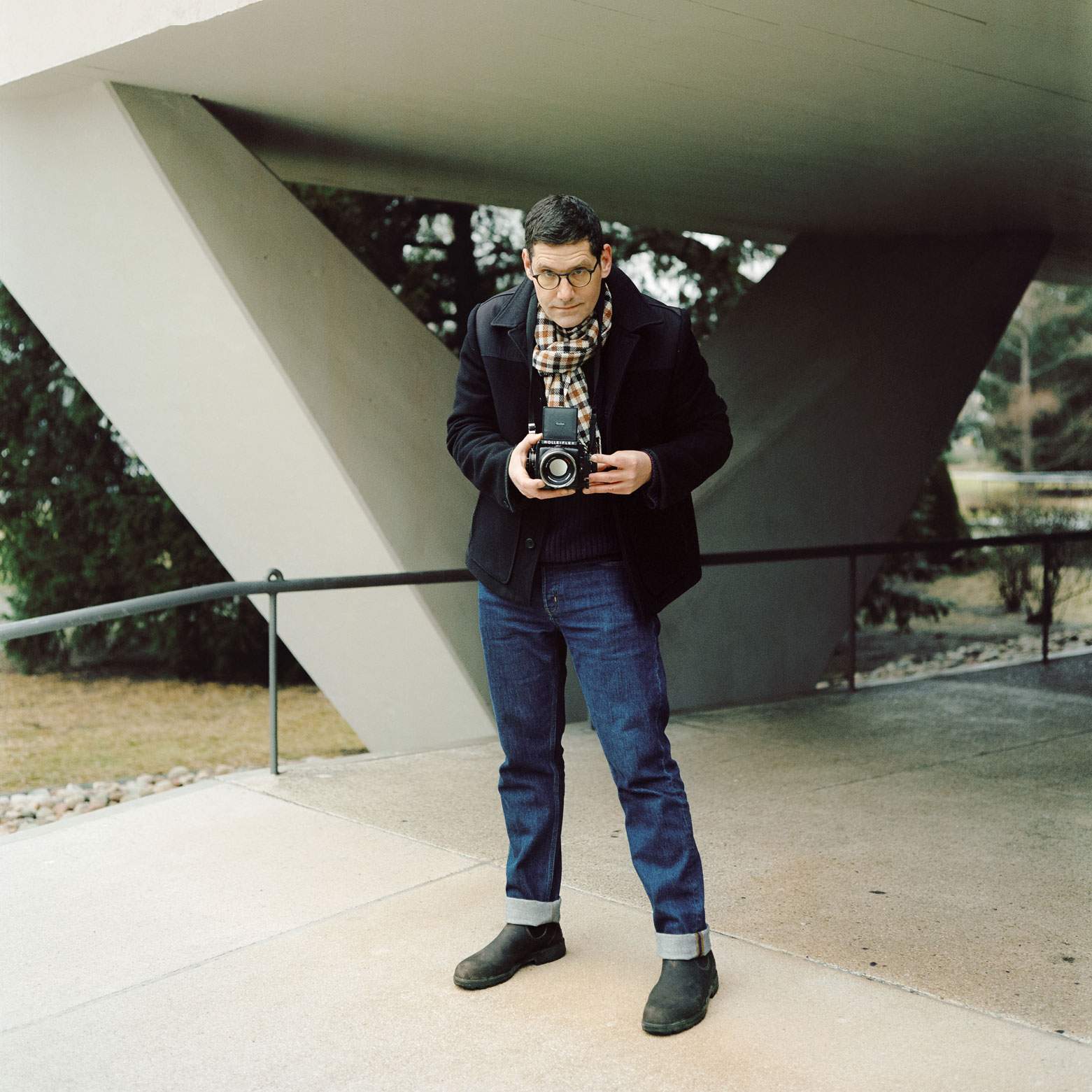
For his first assignment in 2010, monocle dispatched him to Istanbul to shoot an Expo on the Princes’ Islands in the Bosphorus, a job he still remembers fondly. “It was one of the most beautiful stories I did. I was completely taken by the place, capturing everything with my Pentax.”
Since then he has shot countless stories for monocle. “There aren’t many media outlets that produce everything for themselves with this clear visual language and vision,” he says. “And contributing to that is a huge privilege.”
Nowadays, everyone can take a snap with their phone so the creative decision-making process is more important than ever. “I’ve always looked at Felix’s pictures and thought, ‘Wow, that’s where I want to go,’” says Robert Rieger (below). Despite a 21-year age difference, the two became close friends after attending a photographers’ meet-up in Berlin. “As a photographer, you’re often a lone fighter. So to have someone else to talk to about it, that’s great,” says Brüggemann.
Robert Rieger
Shot by Felix Brüggemann on a Rolleiflex SL66E
There are few people in the world who are able to bring to life portraits of people as easily as images of buildings and interiors but Robert Rieger is one of them. “It’s a combination that is hard to come by these days,” he says. “Either you shoot architecture or portraits. It was important to me that both get the same attention.”
Rieger initially studied graphic design before becoming a picture editor and then a photographer. “Robert has a fantastic eye,” says Felix Brüggemann (above). “With simple means such as framing and light, he produces exquisite shots.” Rieger shot his first story for monocle in 2017 about Berlin’s newly opened Orania hotel. “But the coolest assignment was definitely shooting Air Baltic’s Airbus A220 fleet,” says Rieger. “Because the airport was so small, we were granted access everywhere, even in the cockpits – and I got to fly the simulator afterwards.”
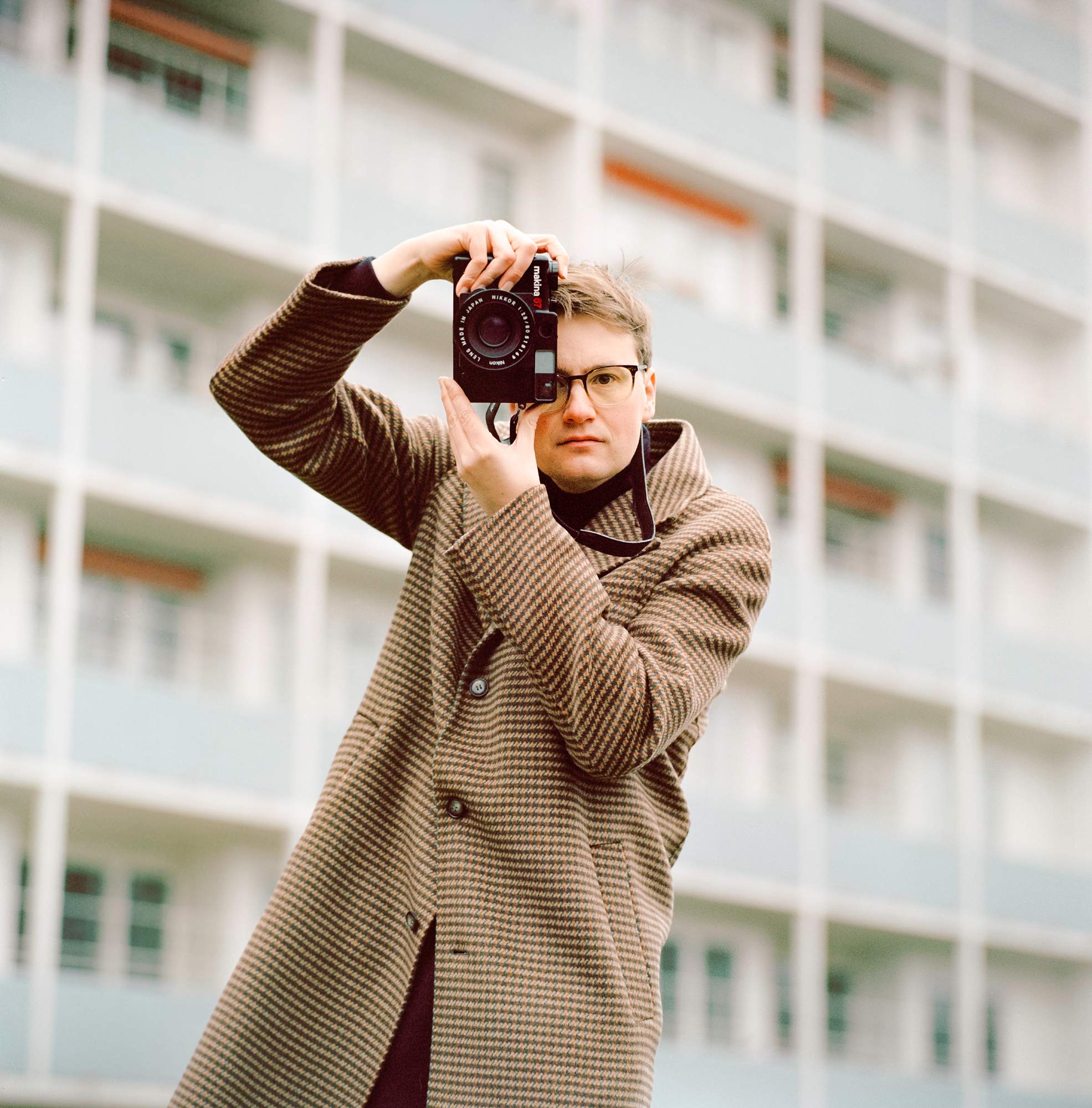
Rieger is an avid plane and trainspotter. He says he’d most likely be a train conductor at Deutsche Bahn if he weren’t a photographer. But for now he’s happy with the profession. Today, Rieger is one of the most sought-after photographers for hospitality projects in Germany, Austria and Switzerland. But no matter how challenging the shoot, he says nothing beats flicking through a freshly printed magazine. “I rarely shoot analogue so I never have photographs in my hands. It’s great to see my photos in print as the paper brings in a whole different level.”
Hackney Marshes, London
Trisha Ward
Shot by Zed Nelson on a Mamiya RZ Pro
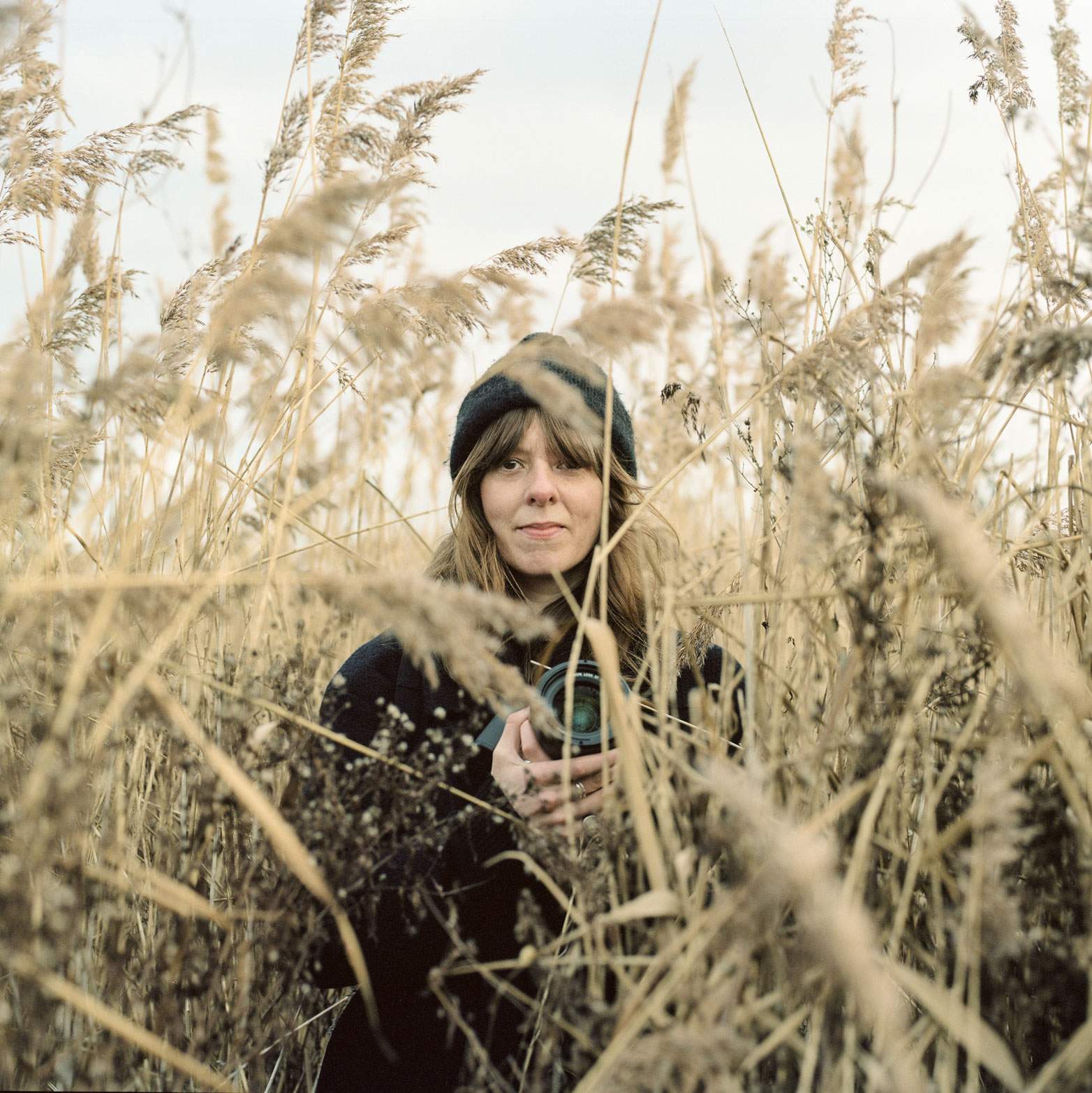
“It’s an honour to be able to make pictures of people you admire, so monocle having me shoot Rachel Whiteread and Christine and the Queens was wonderful – and it was certainly a lot of fun to shoot a piano bar on a cruise ship in Monaco. Whatever the picture, I want to take myself out of it, get the viewer close to the subject and shoot the environment. I shot the painter Celia Hempton and was mesmerised by the pink paint spattered all over her floor and shoes. I want to take pictures of all of it. My dad bought me a Canon eos-300 when I was a teenager because I was always stealing his – probably taking pictures of my friend’s heavy metal bands – and it became something I’d always leave the house with. At art school I got interested in mark-making – the traces people leave behind. Scratches on bus shelters? Take a picture; take a few. It sounds like an Instagram account, doesn’t it? I don’t have a problem with that. Searching for ‘likes’ is exhausting but it’s a great way to show clients work and meet art directors, stylists, people you might work with.
You often don’t get a lot of time for portraits so I like to get in close with a wide-angle lens that takes longer to focus; the subject either relaxes or gets a bit bored. It gives you something different to a digital camera on “sport mode”. Maybe something more honest. My work has been described as gentle and I like that.”
Zed Nelson
Shot by Trisha Ward on a Canon 5D Mark IV
“Putting people at ease is more important than technicalities but you have to know what you’re doing. I mostly shoot on film: it imposes a mindset. It’s slower but the pictures are better. With a medium-format camera on a tripod, you can’t just snap away and that relaxes people for a portrait. Somehow it’s all less frightening than a slick, rubberised digital camera with all its noises.
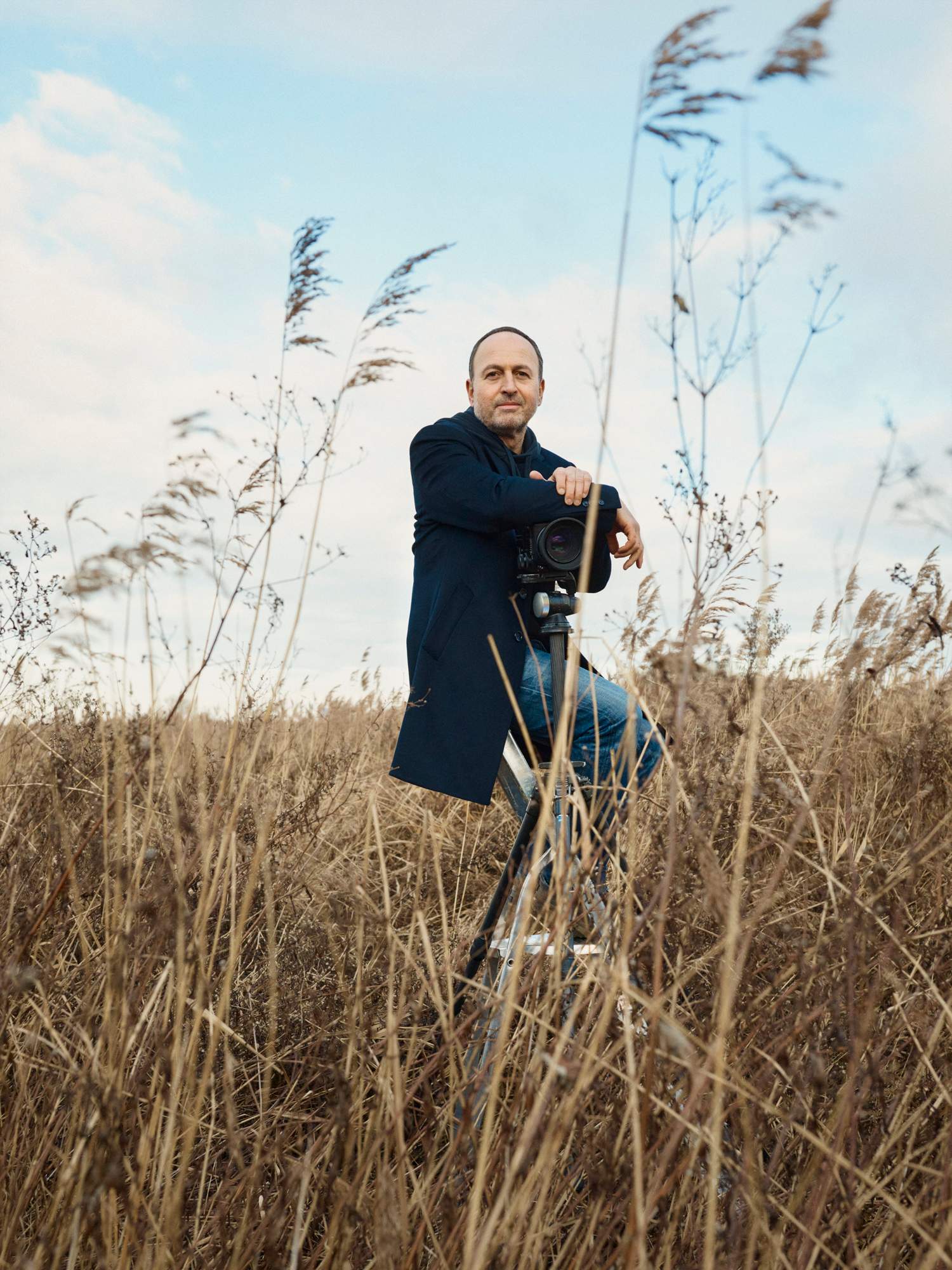
My first monocle commission was shooting Miss Atom, the Russian nuclear industry’s very own beauty pageant. Then São Tomé off Equatorial Guinea – I mean, who’s going unless it’s for work? Then I pitched a tour around the Israeli border because I wanted to know why I thought I didn’t want to go there. It’s fascinating so I’ve been back many times. It begged the question, ‘How not to take a clichéd photograph?’ The young Palestinian throwing a rock; the Israeli settler with a huge gun. You always have to wonder, ‘What fresh idea am I offering?’
My first camera was an old 35mm Pentax slr, borrowed from my mum when I was nine years old on holiday in Somerset. I photographed a cow and got closer and closer until it was just a close-up of its gentle eye. I haven’t eaten beef since. Of course, if I wanted to take a picture of my dinner now I’d use my phone like everyone else but most of these images end up in the cloud, never to be seen again. Photography about something rather than simply of something takes time and a bit of thought.”
Galant Café, Tokyo
Masanori Akao
Shot by Kentaro Ito on a Fujifilm GFX 50R
“I tend to use Nikon cameras,” says Masanori Akao. “I’m used to the mechanics. But I also own Fujifilm and Canon cameras and privately shoot with a Hasselblad and a Pentax 6x7 – that’s probably my favourite.”
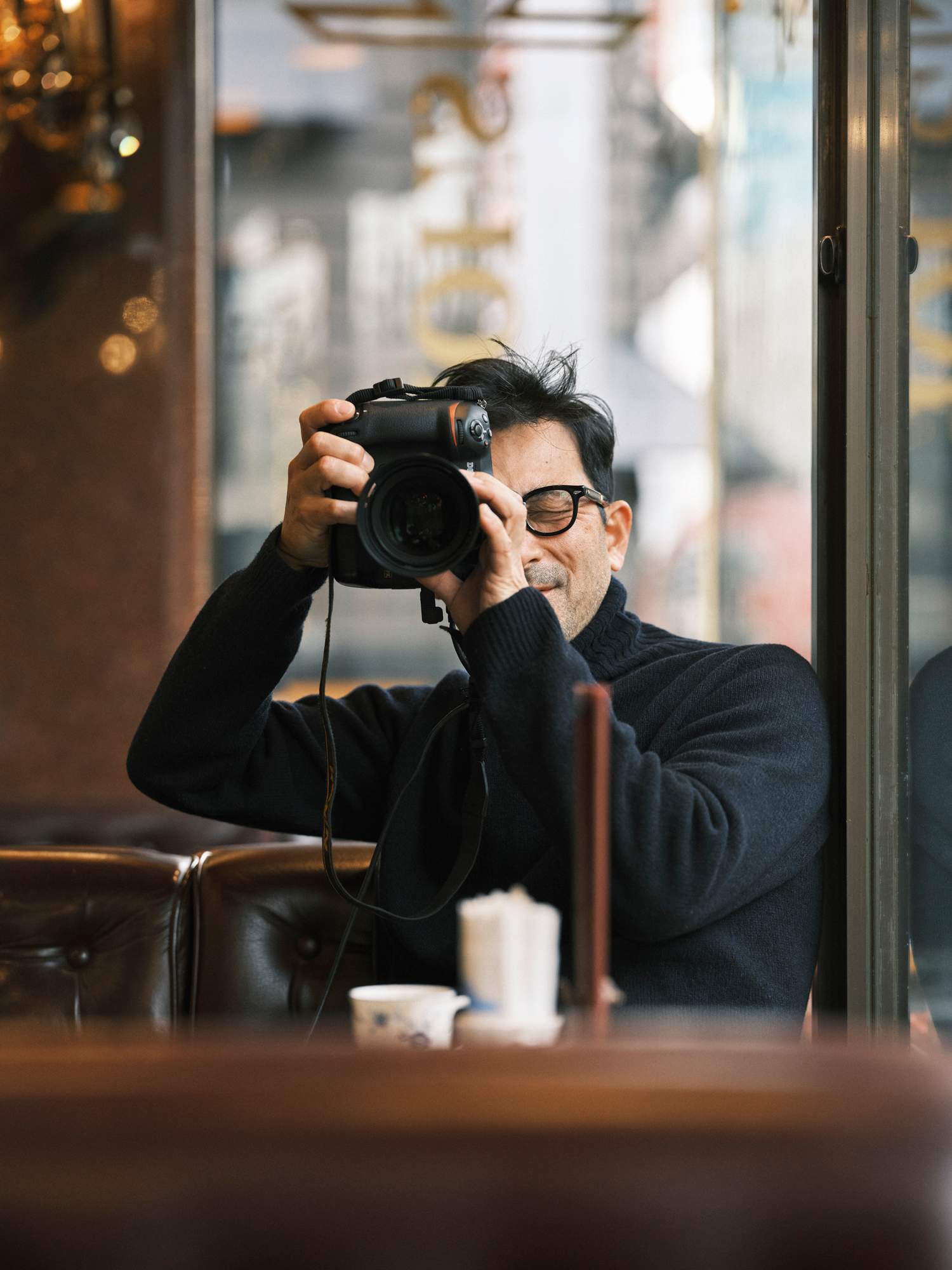
Akao, now a renowned fashion photographer, was once a young enthusiast. “I grew up in the countryside in Oita,” he says. “I wanted to find a way to capture the beautiful scenery and sunsets. I wasn’t any good at drawing so I settled on photography.” He worked in studios and built up a reputation within the business. One assignment sent him to Okayama to shoot a 90-year-old glass-maker. “I was fascinated,” he says. “I kept going back to photograph him and his work.” Another job required him to shoot a different flower in central Tokyo every month for a year.
Akao, who now has a studio in the city’s Ebisu neighbourhood, has shot for many magazines and fashion brands. “I’m known for fashion but I also love reportage and portraits. I always try to bring out the models’ personalities. In Japan, editorial shoots are less about the photographer’s vision and more of a team effort. I enjoy working with an editor and a stylist to create an image.”
Akao chose the location for this particular shoot [Galant café in Tokyo]. “Japanese coffee has its own distinct culture,” he says. “I thought it would be fun to show a place like this to a global audience.”
Kentaro Ito
Shot by Masanori Akao on a Nikon D6
Ito has two of the same camera bodies and always carries one as a spare. “For me the lens comes first,” he says. “This one strikes the perfect balance between overall softness and sharp detail.” Ito has shot some memorable stories for monocle, including an assignment to follow Kumamon, Japan’s most popular ursine mascot, for a day. “I also loved the story I did about the small town of Unzen. I met so many interesting people. It was inspiring and I learnt a lot.”
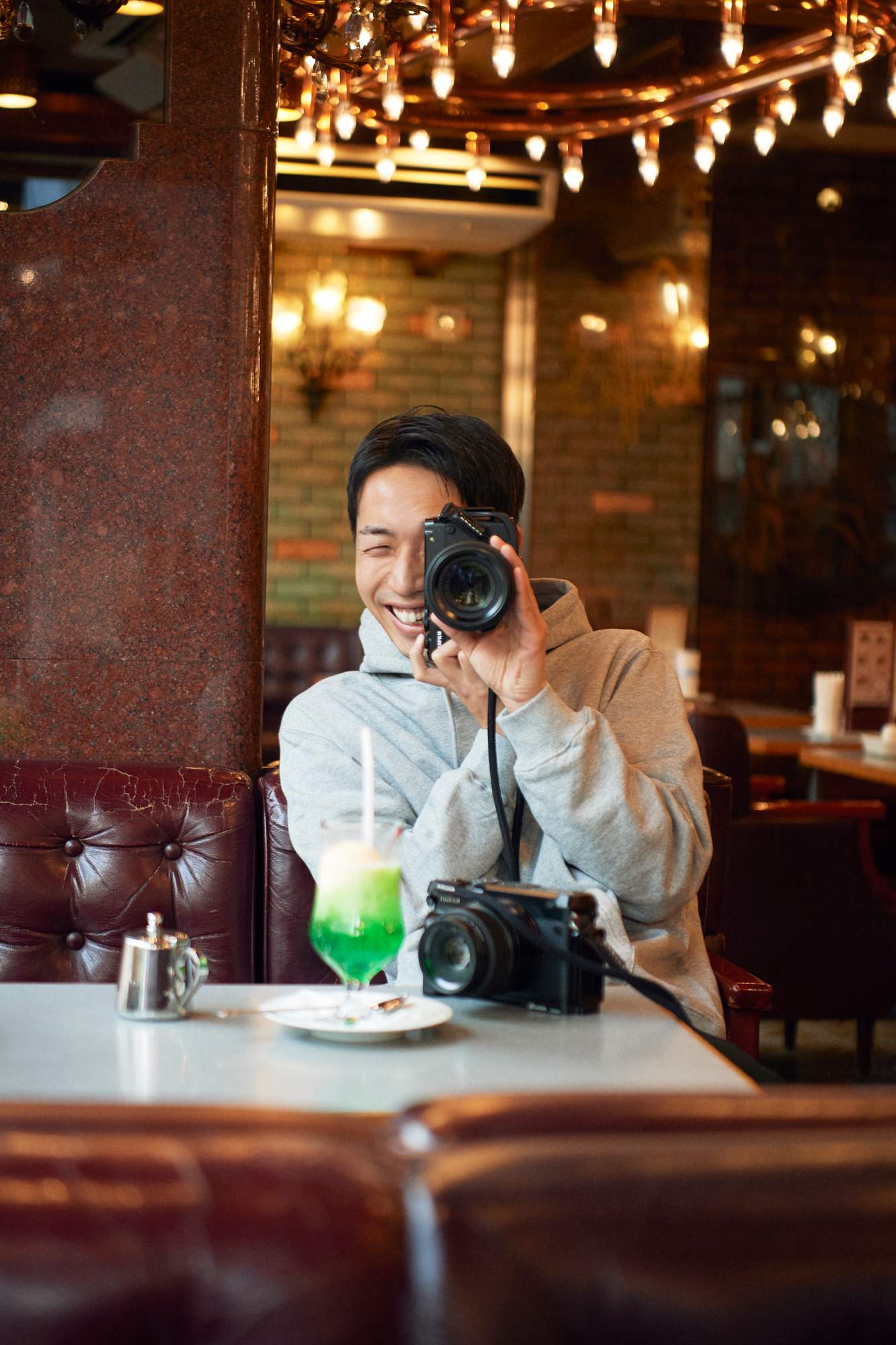
Ito started shooting in earnest in high school and set out on his own at 25. “I never did an apprenticeship but I knew early on that I didn’t mind even the tough parts about the job – working in the cold or walking for miles.” He now has his own studio in his home city, Kumamoto, in Kyushu. “I thought about moving to Fukuoka or even Tokyo but after the Kumamoto earthquake in 2016 I knew how important it was to be close to my family.”
Ito is meticulous in his preparation. He visited the café the day before shooting Masanori Akao. “I came to look at the seating and work out where the light would fall,” he says. “An assignment like this is a collaboration between the subject and myself. The ‘moment’ is when the subject, say, gives a great smile and I’m there to capture it.”
He enjoys seeing the finished product. “I’m so thrilled when I see my work in print. I’m grateful that I can show my work to my family and even to the next generation.”
Galata port, Istanbul
Rena Effendi
Shot by Maria Klenner on Canon EOS 6D Mark II
“The Rolleiflex is the second camera I ever owned. Not long after September 11, I went to New York and visited a Richard Avedon exhibition at the Met. His portraiture is one of a kind and when I saw his auto-portrait with his camera, a Rolleiflex, I made a note of it and bought it the next day. It has been my companion ever since.
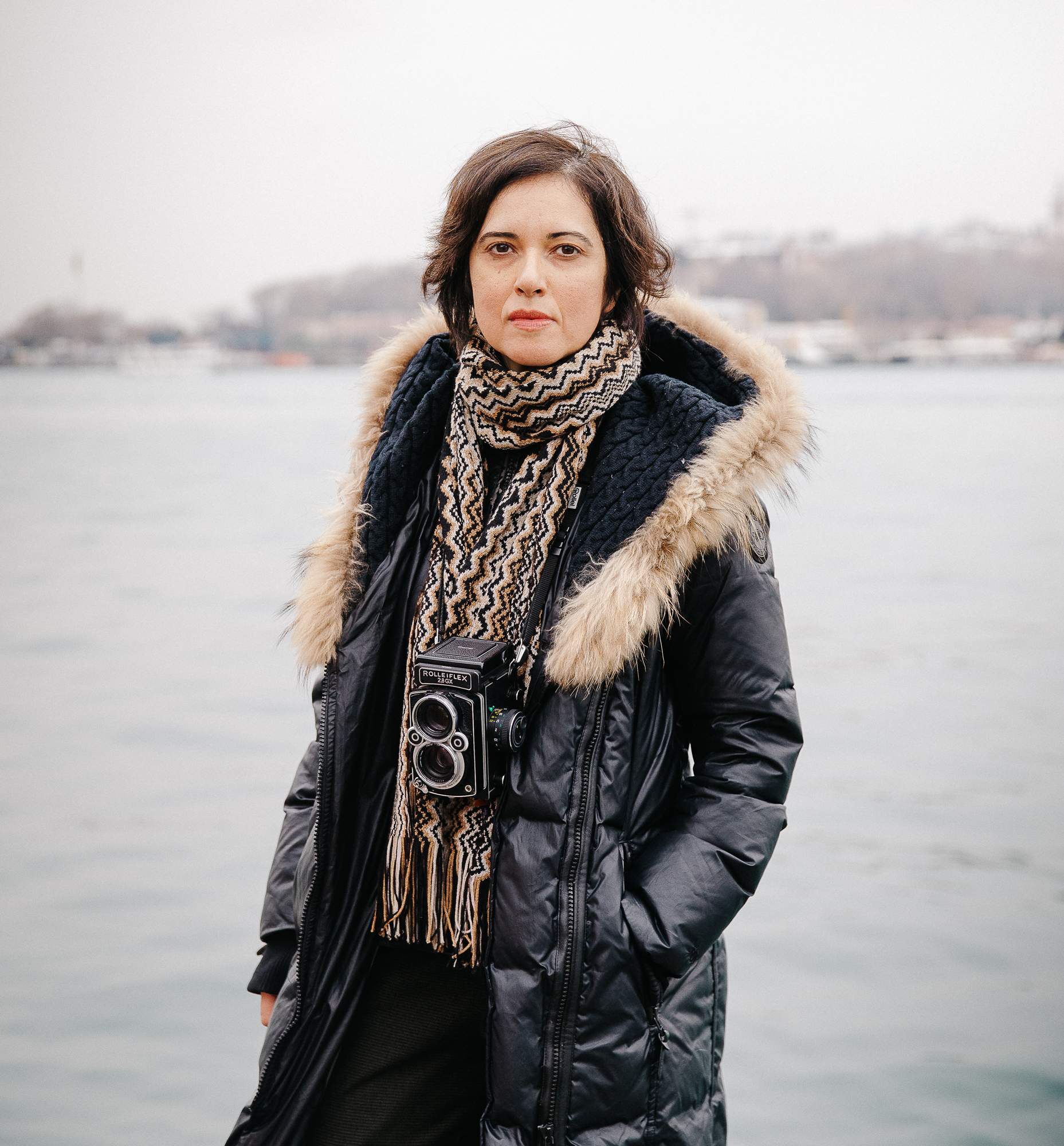
I am a neurotic but analogue forces me to surrender. I know that I have only 12 frames in a roll so I take my time. There is also this beautiful mystery of not knowing the result. Every place, whether it is Libya, Turkey or the DRC, has its own colour palette so there is always an element of surprise, something to look forward to when the photographs arrive.
I’ve been drawn to portraiture from the moment I set eyes on Magnum’s exhibition on life after the Soviet Union. I dropped painting, which I thought was what I wanted to do, and picked up a camera. Baku [the capital of Azerbaijan] was undergoing a lot of change and I became enthralled with this one neighbourhood. I would go back to photograph the same people. Street portraiture drew me in. Those photographs won the Fifty Crow award in the US. I thought to myself, ‘Maybe I can become a full-time photographer.’ Four years later, I was. My first assignment for monocle was an Expo on Levantines living in Izmir. The most memorable portrait I took there was of Alfred Simes, who had just turned 101.”
Maria Klenner
Shot by Rena Effendi on 2.8 planar Rolleiflex 75mm
“No matter who is standing in front of the camera, the more you pay attention to them, the more beauty you will find. Not in the conventional sense but as the uniqueness of the individual. Nobody else will be able to stir something in you or touch you the way this person does. That’s why I adore taking portraits. I find people’s faces fascinating.
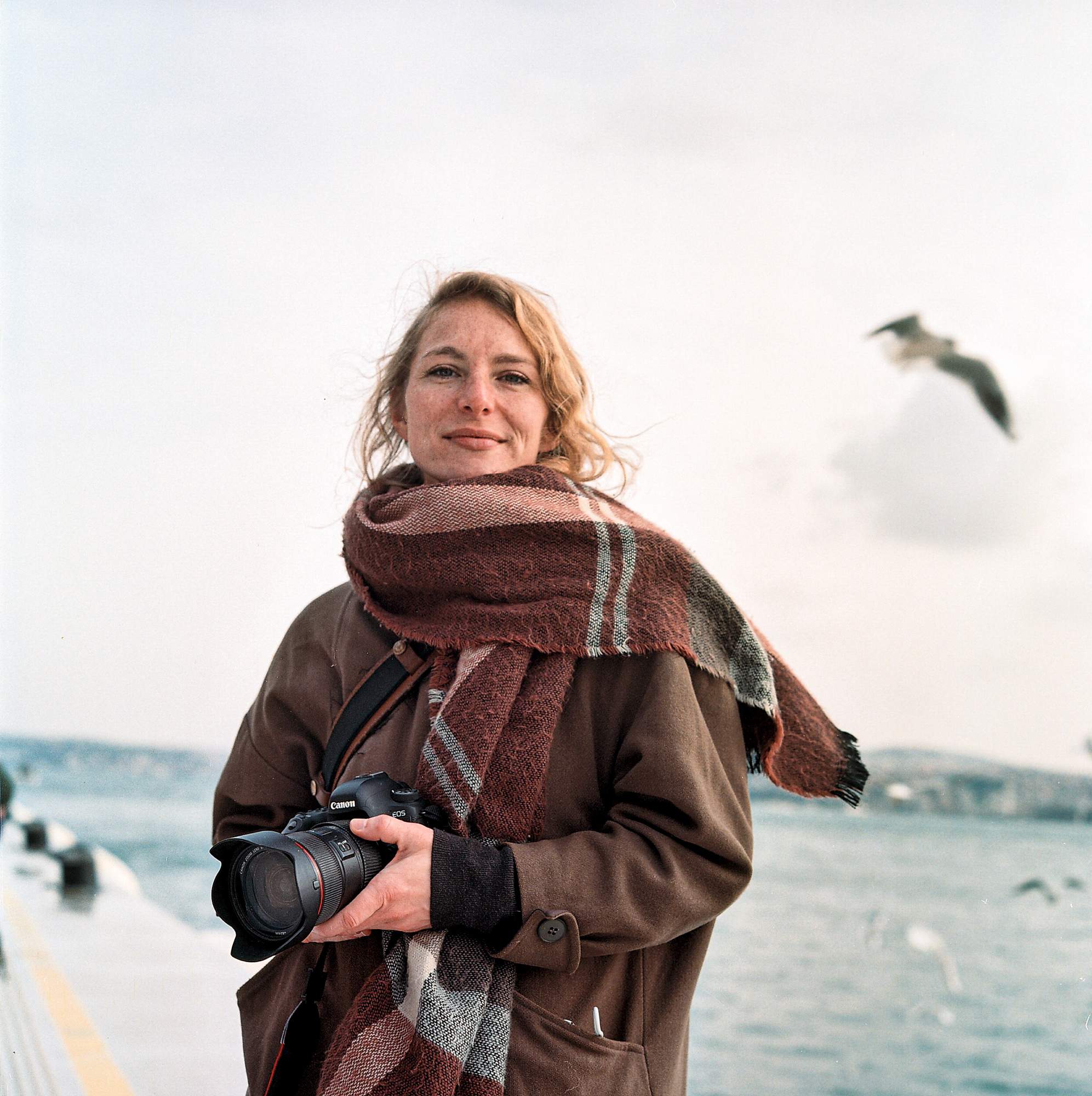
I love to work with analogue but it is not always possible. Because sometimes things need to go faster and that is what digital provides: speed. The main thing for me is that it gets the job done. After I studied photojournalism in Hanover, I worked for a while at Frankfurter Allgemeine Zeitung in the photographic department. It taught me how to get the assignment done no matter what, whether it is a weather photo or a portrait of an old lady at a church.
I was first commissioned by monocle to photograph Lebanese fashion designer Rabih Kayrouz at his atelier in Gemmayze. Later, the aftermath of the Beirut blast was a hard one to capture because the lines of reality were blurred. The night of the explosion, monocle’s photography director Matthew Beaman emailed me to check in if I was fine and if I was OK to shoot. It was healing to photograph the cleaning up of the streets. I couldn’t run away. I had to look at it and to face it made it better.”
By the Borso Italiana building, Milan
Elisabetta Claudio
Shot by Luigi Fiano on a Pentax 645Z
A native of Puglia, Claudio moved to Milan when she was 19 to study design and was drawn in by the wealth of visual imagery on the Italian newsstand. “There was no social media then. You had magazines: Vogue Italia, the French and Italian editions of Photo, The Face. Back then there was still a clear boundary between high-end photography and commercial work.”

Claudio soon delved into the medium and began work as a portrait photographer for titles such as L’Uomo Vogue. She’s an admirer of Juergen Teller and even uses the same Contax G2 camera as he does. She likes to blur the lines between art and fashion, and is never a fan of set-ups that feel too manufactured or posed.
She recalls a monocle assignment at the Palazzo Farnese in Rome, which serves as France’s embassy to Italy. She was given free rein to photograph guests at a function to celebrate Bastille Day, shooting with a flash in an overexposed style. “I think I was the only accredited photographer,” she says. “There were dignitaries, clergy, officers, aristocrats. It was something out of a Fellini film. I looked for those ironic moments – barefoot socialites, people with two melting ice-cream cones in hand, going behind the scenes with the caterers. We are obsessed with beauty – and everyone has a smartphone to record themselves looking perfect. I wanted to find moments where I could tell a different kind of story.”
Luigi Fiano
Shot by Elisabetta Claudio on Contax 645
Luigi Fiano’s exposure to photography came after a stint working at an advertising agency. “Magazines such as monocle were on my radar as this was the world I was surrounded by. At that point I was already passionate about photography and reportage.” Fiano is very precise in how he works behind the lens, carefully observing his surroundings and waiting patiently for that perfect instant when things fall into place.
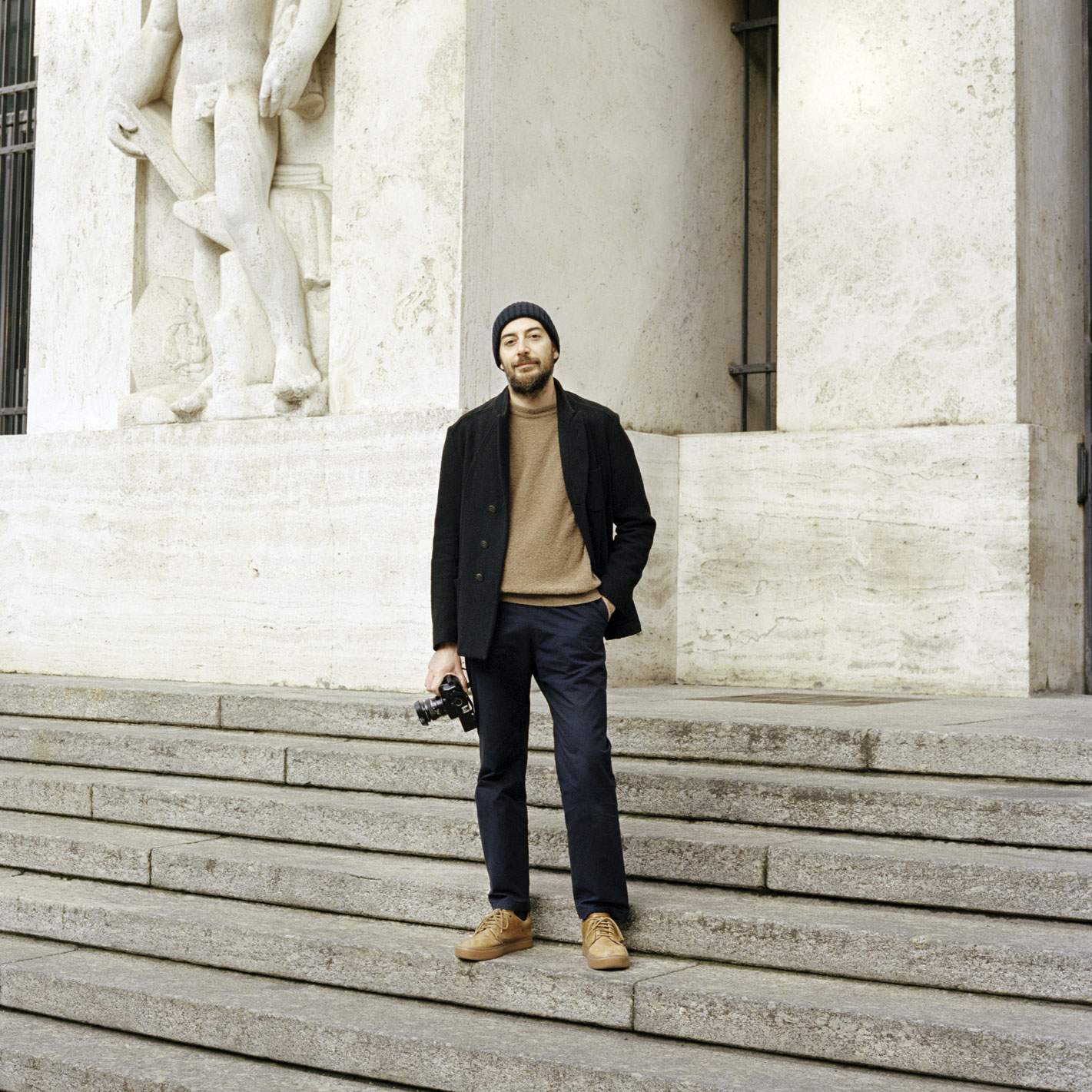
One recent assignment for monocle found him in Valletta. He sized up a park in the Maltese capital that was bathed in a gorgeous morning light that brought out the yellow hue of a stone archway. And then he waited. As if on cue, a gentleman stepped into view. “It’s that perfect alchemy when things enter into the frame and everything just clicks.” He snapped a photo of the individual, who stands with his back to the camera, to create a memorable shot. “That’s the challenge we face now. Many spots that we visit for work have been captured a million times by people armed with mobile phones. The challenge is to find your point of view. Photography is not linked to the instrument. It comes down to your particular gaze.”
Fiano is adept at helping strangers to relax. “I am quite timid so when I have a stranger before me we are on equal terms. I try to get them to reveal a side of themselves that is intimate and that engages the viewer.”
By the Eiffel Tower, Paris
Alexis Armanet
Shot by Stephanie Füssenich on Canon EOS R6 mirrorless
“When I got called up to shoot a story about Al-Jazeera in Dubai for the first issue of monocle 15 years ago, I was immediately up for it. I was already working in fashion photography at the time but I was always interested in getting into reportage, probably because I initially wanted to be a writer. I love telling stories; a single image can be interesting but a series of photos has a narrative and that’s what I feel most comfortable doing.
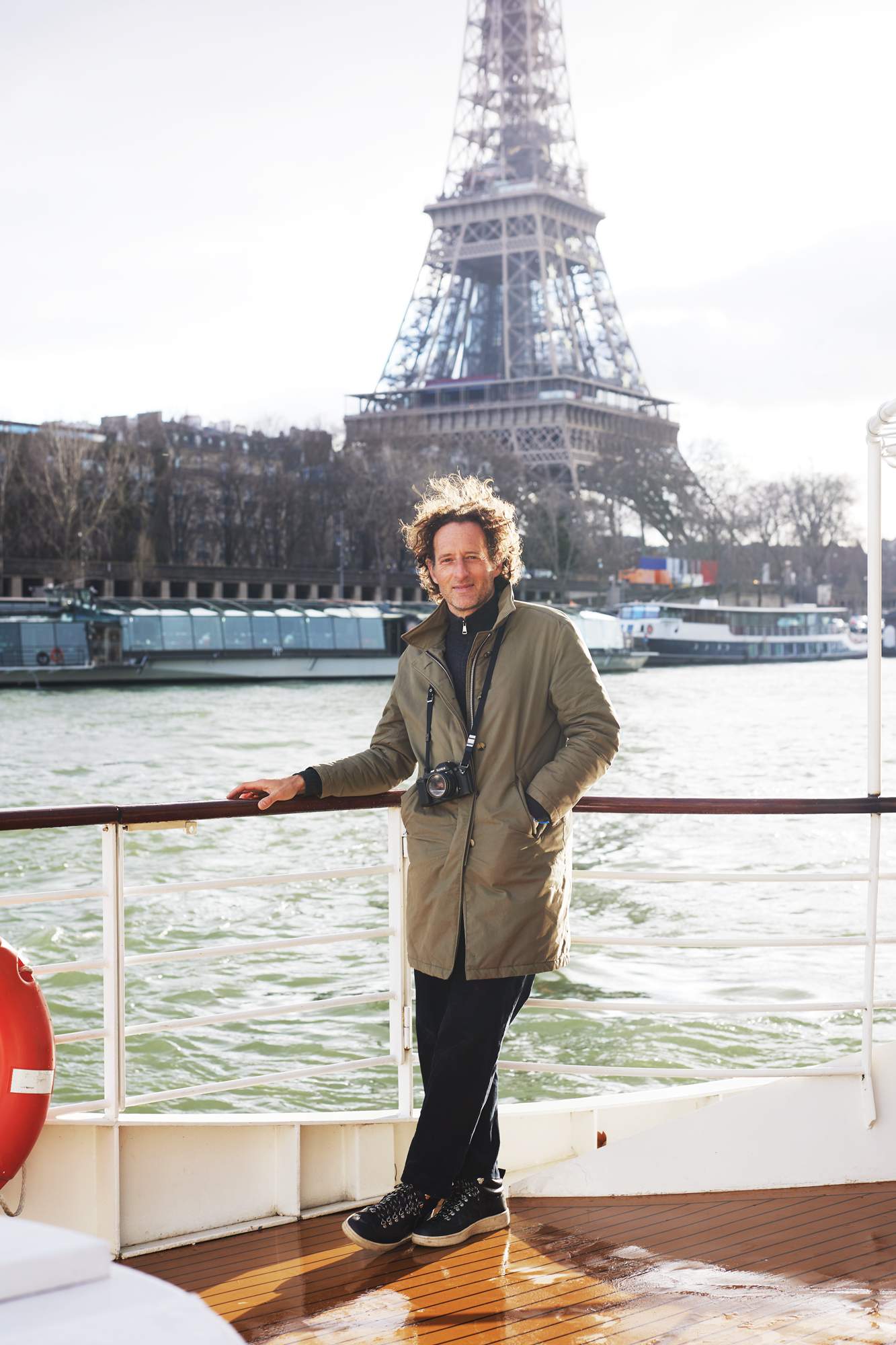
The other day I found a strip of Polaroids from a monocle shoot that we did at Italy’s Hotel Il Pellicano many years ago. It allowed us to plan the composition of the shots and get a sense of how they would flow on the page. It’s a very cinematic way of working.
After 30 years in the field I’ve learnt that the layout is often more important than the photos; it’s what brings them to life. That’s why I find it more exhilarating to see my work printed in a publication than hung on a wall. I like that there’s a utilitarian purpose to magazines: they are designed to be seen and read. Maybe that’s why I like to shoot on film. It forces you to really look before you snap, which we don’t do much any more in the age of digital.
I’ve done a lot of fashion shoots for monocle, from Bangkok to Marseille. The highlights are the reportage shoots. I loved following Tokyo’s sumo fighters for three days. It’s very difficult to get access to their quarters but my job allowed me to get in.”
Stephanie Füssenich
Shot by Alexis Armanet on Konika Hexar analog
“The beautiful thing with photography is that if you asked 30 people to take an image of the same object, you would have 30 completely different results. Everyone sees something else. It’s a good exercise in keeping your eyes open to what’s around you.

Perhaps that’s also why I hardly retouch my photos. I want to show things the way they are. Smartphones have made photography more accessible, which is great, but it’s a shame that we’re now constantly snapping away. We’re all the time trying to capture moments on camera, rather than fully living them. It also means that people in the streets have become more suspicious of having their photo taken. They’re worried about their privacy, which makes the task of the photographer more difficult. There’s something very intimate about taking someone’s portrait and I don’t want that to be lost.
What I like most in my job is that it allows me to dive into many layers of society. We’re very privileged to see behind doors that are usually closed. For my first job for monocle, in 2017, I got to take the last night train from Paris to Nice before the service was stopped completely. It was very emotional; there were railway geeks, couples and people demonstrating against the abolition of the train.
I’m happy that print still exists. Seeing an image on beautiful paper stock really does something to it.”
Brooklyn, New York
Ike Edeani
Shot by Thomas Prior on a Sony A7RIV
Ike Edeani trained and worked as an architect before turning to photography. “I’m interested in place, gesture, detail, bodies at rest and in motion, and in-between moments,” he says. “Photography was the practice I felt most at home with so it wasn’t much of a choice.”
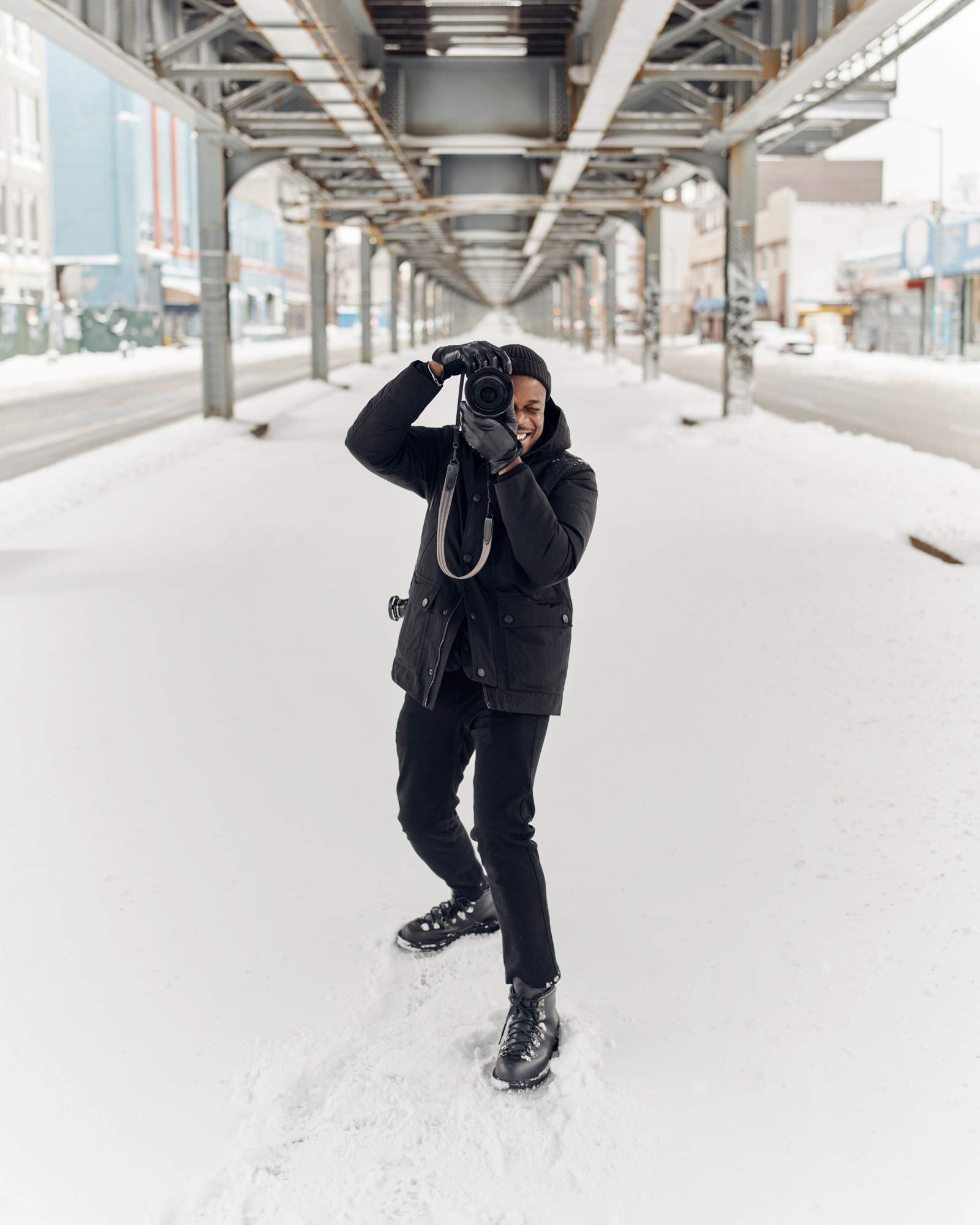
The Nigeria-born photographer, who moved to the US aged 16, now lives in Brooklyn. He currently shoots with a Canon 5D Mark IV, a Pentax 67ii, and a Mamiya 7 II. “The Mamiya is my favourite: small and lightweight but capable of incredible quality and contrast.”
Edeani’s first assignment for monocle was covering the inaugural Silicon Valley Contemporary Art Fair in 2014. “It involved six different locations in three cities across the San Francisco Bay Area, so I was probably just trying to stay awake,” he says.
His commercial clients range from technology firms to sporting giants and he also shoots for magazines and newspapers. Edeani finds social media useful for sharing his work with a massive audience: a recent series included a poetic look at small moments in Paris, from a dog staring at a vase of flowers to a shaft of light falling on a wall. He believes that his ability to find things that others might miss is “instinctive”. “I’ve never really thought about it or tried to understand it,” he says. As for where photography goes in the age of the smartphone? “It continues to evolve.”
Thomas Prior
Shot by Ike Edeani on a Fuji GFX 100S
Prior shot his first assignment for monocle in 2017 at the PBs NewsHour. “Trump had just been elected and the mood in Washington was a little sombre,” says Prior. While many of the images portray the frenetic workings of a newsroom – the production team crammed around a table; anchors live on air; a tangle of wires – others are quieter and more contemplative. One shows a large tree standing against a blank sky. Another a white easel pad with the word “Help!” scrawled on it in black ink.

Since buying his first camera at the age of 13, Prior has seen the world through his lens. “I like simple images and colour,” says the Brooklyn-based snapper. “I don’t know what else I would’ve done.” Today he uses the Fuji GFX100s and the Sony A7R IV. “They have the biggest output and best colour.”
Prior has travelled across the US shooting for magazines but “things have been a little more local” since the pandemic. But he hasn’t been any less busy. In the spring and summer of 2020, he photographed New York for his book Amen Break, covering everything from eerily empty shops to the protests in the wake of the killing of George Floyd. As for having his own photo taken, he is “mostly OK” about it but with caveats. “I’m a control freak,” he says. “I overthink the post-process, so it’s not a naturally happy place for me.” That happy place, instead, is holding the camera firmly in his own hands.
Writers: Fiona Wilson, Alexandra De Cramer, Ivan Carvalho, Annick Weber, Clarissa Sebag Montefiore

